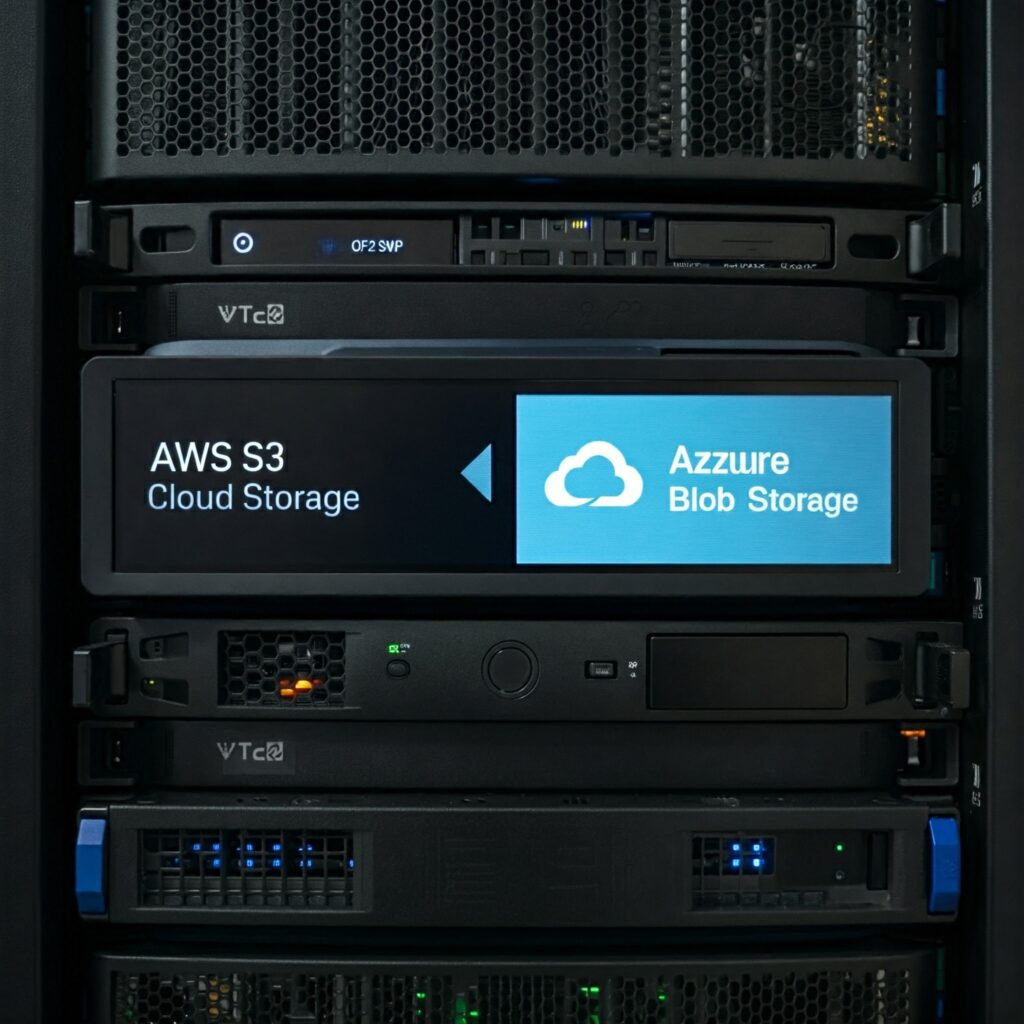
Big tech companies manage millions of files seamlessly. Think of cloud storage as a giant digital warehouse where you can store almost unlimited stuff. Today, we will explore two of the most popular cloud storage solutions: AWS S3 and Azure Blob Storage. Don’t worry if these names sound intimidating, by the end of this article, you’ll understand them as clearly as you understand saving files on your computer.
The basics of object storage
Imagine a massive library, but instead of organizing books on shelves and in sections, each book lives independently with its unique code and description. That’s essentially how object storage works! When you upload a file, whether it’s a photo, a document, or anything else, it becomes an “object” with three key components:
- The file itself (like your vacation photo)
- A unique identifier (think of it like the file’s address in the storage system)
- Metadata (extra information about the file, such as when it was created or who owns it)
This approach makes storing and retrieving vast amounts of data incredibly easy without worrying about running out of space or losing your files. It’s like having a magical library where books never go missing and you can always find exactly what you’re looking for.
AWS S3, the veteran player
Amazon’s S3 (Simple Storage Service) is like the wise old sage of cloud storage. Launched in 2006, it’s seen it all and done it all. Let’s break down why S3 is so special.
What S3 does well:
- Reliability: S3 is like that friend who never forgets anything. It keeps multiple copies of your files across different locations, ensuring an astounding 99.999999999% durability (that’s eleven nines!).
- Flexibility: Need different kinds of storage for different use cases? S3 has you covered with various storage classes. It’s like having different types of lockers:
- Standard (for files you use frequently)
- Infrequent Access (for cheaper storage if you don’t need files as often)
- Glacier (super cheap for files you rarely access)
- Integration: S3 connects seamlessly with a huge ecosystem of other AWS services and third-party tools. It’s like having a universal adapter that plugs into just about anything.
Where S3 could improve:
- Pricing: The pricing can be tricky to predict, kind of like going to a restaurant where every little extra, like the sauce or side dish, has a separate cost.
- Feature Overload: With so many features, S3 can feel overwhelming when you’re just getting started, like trying to read an entire encyclopedia in one go.
Azure Blob Storage, the modern challenger
Microsoft’s Azure Blob Storage is like the newer restaurant in town that’s quickly becoming the talk of the neighborhood. It might be younger than S3, but it brings some fresh and exciting ideas to the table.
Azure’s strong points:
- User-Friendly: If you’re already familiar with Microsoft products, using Azure Blob Storage will feel like second nature.
- Cost-Effective: For data you access frequently, Azure Blob Storage often offers lower prices, making it an attractive option.
- Performance: Azure Blob shines when it comes to handling large files and streaming. It’s like having a powerful engine built for heavy lifting.
Room for growth:
- Fewer storage tiers: Azure Blob Storage doesn’t offer as many storage tier options as S3. If you love having lots of choices, this might feel a little limiting.
- Ecosystem: While growing, Azure’s ecosystem of third-party tools isn’t as expansive as AWS’s, making integration slightly more challenging in certain cases.
Choosing the right option:
Here are some questions to help you decide between S3 and Azure Blob Storage:
- What’s your current setup?
- Already using AWS? S3 is the natural choice.
- A heavy Microsoft user? Azure Blob Storage will feel like home.
- What’s your budget?
- Frequently accessing your data? Azure may offer a more cost-effective solution.
- Need long-term archival? S3 Glacier’s ultra-low prices for rarely accessed data are hard to beat.
- How complex are your needs?
- If you need advanced features, S3’s long history gives it an edge.
- Want simplicity? Azure’s streamlined approach might be a better fit.
The technical showdown
Here’s a quick comparison of the key features:
| Feature | AWS S3 | Azure Blob Storage |
| Minimum Storage Time | None | None |
| Availability | 99.99% | 99.99% |
| Durability | 99.999999999% | 99.999999999% |
| Storage Classes | 6 classes | 4 tiers |
| Max Object Size | 5 TB | 4.75 TB |
In summary
Both S3 and Azure Blob Storage are top-notch options, kind of like choosing between two luxury cars. S3 is like a fully loaded vehicle with every possible feature, while Azure Blob Storage is more like a sleek, modern car that’s easier to drive but still packs a punch.
There’s no universal “best” choice. it all depends on your specific needs. Both services will store your data reliably and scale with you as you grow. The key is to match their strengths with what you need.
Pro Tip: Start small with either service and grow as your needs evolve. Both platforms offer free tiers, so you can get started without spending a dime, perfect for testing the waters.

